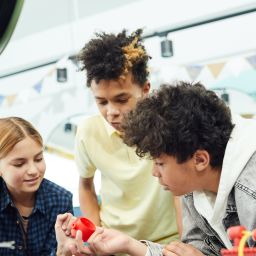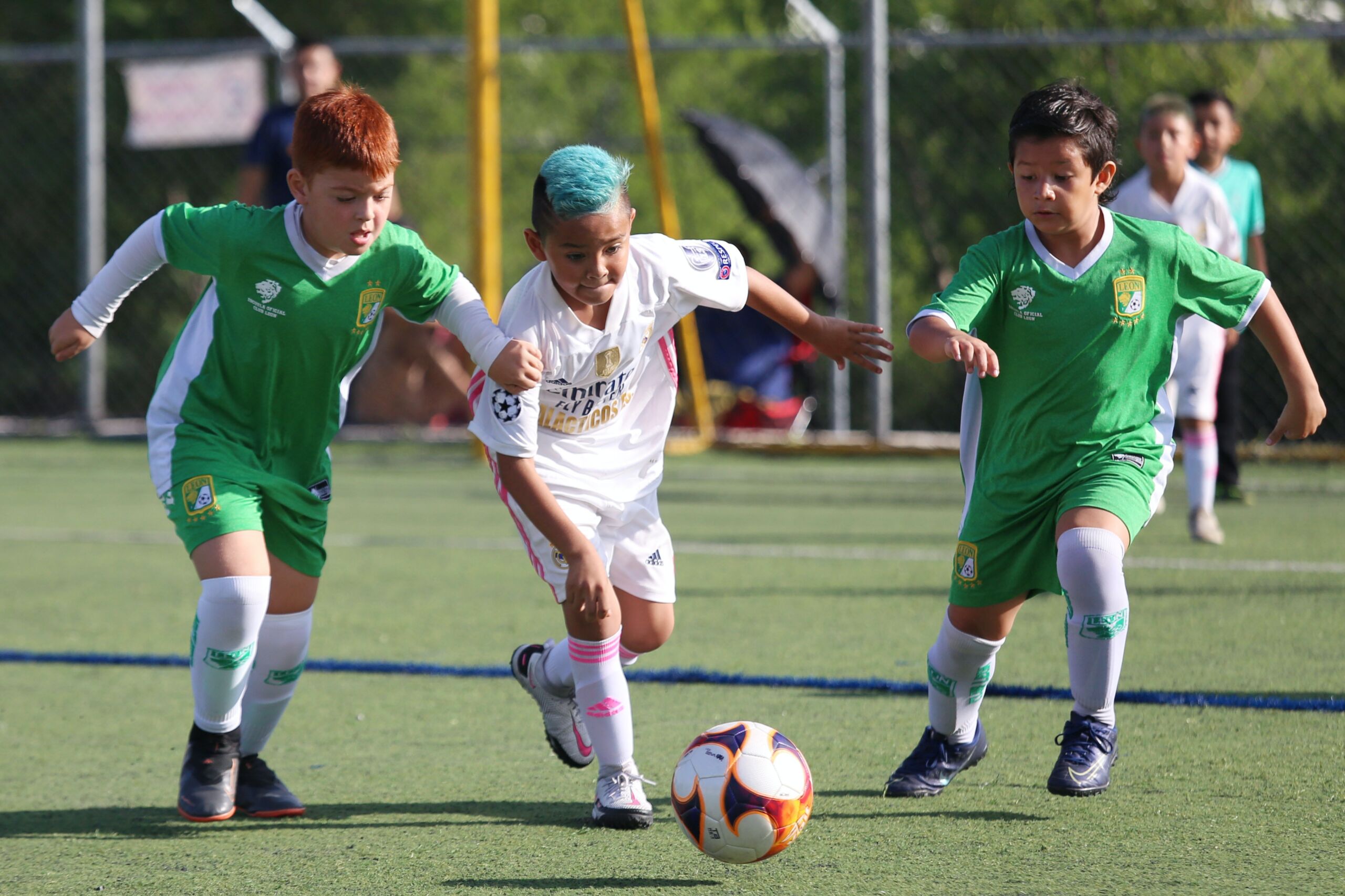
Before we dive in, ask yourself a couple of key questions:
- What is the primary driver of early academic success?
- What is the one foundational skill that forms the basis for advanced intellectual ability?
For us at First Habits, the answer to both of those questions is memory. Memory and memorization techniques are extremely important areas of focus for success in elementary school and they will also form the basis for future academic achievement as your child advances to higher order intellectual abilities such as, creative or critical thinking, problem solving and decision making. However, most memory guidance that our children will get from their teachers is likely to focus on rote memorization techniques which are inefficient and outdated. With an accelerated ability to memorize bits of information, your child will be better equipped to spend less time struggling with memorization and more time gaining an understanding of any subject matter and seeing how what they are learning fits together. This makes it all the more likely that an upward spiral can emerge.
In our previous posts, we emphasized the significance of First Habits, and how cultivating small, repeatable behaviors can have a profound impact on a child’s overall well-being. Nasal breathing is a prime example that will influence physical health, intellectual ability and emotional balance. In a similar manner, memory is a foundational aspect of intellect that will have a tremendous impact on a child’s ability to not only do well in school but also save time, energy and stress as compared to students not utilizing proper memory habits. In this blog, we will explore the importance of memory and how children can learn effective memorization techniques, which will then become self-reinforcing First Habits.
The Significance of Memory: Unlocking Academic Success and Intellectual Abilities
To start off, we must recognize that memory is not something that can be mastered in a few sittings, put on auto-pilot and then you have a top-tier memory for the rest of your life. Even genius-level adults are still practicing and improving their memories in their 60s and 70s.
You as parents may have heard the terms like chunking, visualization and substitution as techniques to improve memory and while these ideas are usually reserved for older children or adults, there’s absolutely no reason they can’t be introduced to younger children with the proper level of simplicity and in a way that will help supercharge their memory abilities. This is one of the reasons that the soon-to-be-released First Habits app will be so beneficial for your children. You’ll be able to set them up and work through memory games on the app using the appropriate techniques to ensure that their ability to memorize anything is optimized from the very beginning.
Just think about what that means for their future. Children who go into 1st or 2nd grade with some understanding of advanced and even intermediate memorization techniques already will have the tools available to them to succeed in their classes and stand out amongst peers. And these techniques work. Even people learning them in their 30s have been able to achieve memory feats that they never believed possible.
You may have seen on TV or social media seemingly impossible feats of memory. The mnemonist is usually claiming to have had a very average memory but through a few techniques they were able to memorize a deck of playing cards in seconds or the first 500 digits or pi. You may have even read the book Moonwalking with Einstein and are aware that there are evidence-backed ways to improve your memory.
But even with that knowledge, many of us don’t employ these tactics because we already have an ingrained habit as to how to memorize a face and a name (most of us are horrible at this anyways) or how to remember a 7-digit number (just say it over and over until you think you have it memorized and then take your chances). Why not teach your growing child the scientific-based techniques that memory experts use? Even if some of this content may be a little too advanced, why not get them thinking about these tactics and ways to understand how memory works? Even if it’s just the understanding that memory is malleable and improvable, having that growth mindset (a topic of a future post) could make all the difference in their drive and motivation to improve their memory. We all know that our children can surprise us in ways we would never imagine, especially when it comes to memory and language acquisition in their early years.
But this is the most important thing about memory: left to develop without any external prompts the way the mind learns to memorize things is not efficient or effective. The process of memorization taught to you by your parents and teachers is likely not the same as what is recommended by memorization experts. The learning process is frequently how the teacher or parent learned to memorize when they were children. Oftentimes it’s just repeating a phrase over and over, reading a passage over and over, taking notes and summarizing certain concepts (while a little closer to the mark) – these are all inefficient ways to memorize and certainly not the techniques that top memory experts use.
The goal is to move away from this “rote” path of memorization. Rote memory has been the source of wasted years of time in most of our lives. What would you pay now to get that time back or have your children not go through all those hours of poring over words with flash cards or repeated reading of a textbook passage? If you had this key First Habit, don’t you think that certain subjects would have been significantly less demanding, or you would have achieved higher grades in almost all of your high school classes?
Say your child asks you one day “how do I read a book or how do I memorize something”? As an adult that’s not an easy question to answer. You might say something like “well you just memorize it, or you just read it.” But that’s not an answer! It’s so ingrained in adults – “well you just think about it for a period of time and somehow you just know the word and voila, memorization!” It may seem like a trite question to adults but for someone who is learning to memorize, the question is extremely important.
The Power of Vivid Visualization: Enhancing Memory Through Memorable Images
So first off, let’s move away from rote memorization. But toward what, you ask?
The main limiting factors of memory tend to be (1) the information doesn’t get coded into our brains properly and (2) that information is not able to be efficiently accessed when needed. So, the ways to counteract those two items are taking keen notice of the thing that you want to memorize and then ensuring that the information is in a format that can be recalled in the future.
We learned that the most important thing to know about a breathing habit is that nasal breathing is the sole way to breathe. Likewise, the dominant focus for memory is vivid visualizations. That means taking a concept or word or idea that may not have any known tangible quality and transforming it into a vivid image in your mind’s eye. Human minds are tremendously strong at constructing and memorizing visual images so let’s harness that power to improve our children’s memory.
When memory fails us, it’s usually because we ask it to encode and recall an intangible, amorphous item that has no connection back to anything that we already know. That’s why numbers and names are so easy to forget. There’s no easy way to visualize them. But it’s also why in your job you may have started off not remembering anything that well when you didn’t have a whole range of experiences to compare something to. Now when a piece of data is called out, you know how it fits within the overall framework of all other data that you’ve come across. Therefore, it has meaning and can be fit into a place within your mind. It’s the same reason why people who are good story tellers can paint a graphic image in your brain and you will remember the story for years afterwards.
The first step to a solid First Habit in memory is to make whatever your child is trying to memorize a vivid picture. Here’s the other thing about memory – it needs to be memorable. That statement is so obvious but 95% of the time when you forget something it’s because the piece of information did not stand out and was not, at its core, memorable enough.
Let’s take for example a child trying to memorize that a favorite food of a gorilla is a banana. If they just see a gorilla eating a banana, maybe they’ll remember that but it’s a little mundane and not all that out of the ordinary to see an animal eating food. They’ve likely seen it a hundred times already in their lives. However, if they come up with some really ridiculous image of a gorilla eating a dozen bananas at once and then other bananas flying at the gorilla and the gorilla is trying to catch those bananas and shoveling the bananas into their mouth as quickly as possible, then the scene becomes action packed and likely a lot more memorable. It’s extravagant and novel for the child. Try to remember something like that in your own life and then spice the scene up to incorporate something that is really out of this world. What is the term for something that is out of this world and extravagant and outlandish? Well, said simply it would be “memorable.”
Look at the above images. I bet you’re not going to forget them for a long time.
Techniques for Creating Lasting Memory Scenes: Size, Quantity, Action, and Substitution
So how does your child create these scenes and visualizations that are lasting and instantly recallable? The four main features are below:
- Size – picture “gigantic” things
- Quantity – picture “millions” of things
- Action – have one thing act on the other
- Substitution – have one thing take the place of the other
In our previous example, the gorilla was eating (action) a large number of bananas (quantity) and the bananas were flying at it (action). You can incorporate one or all of the above factors – the more the better – and you can use multiple instances of the same one (in our example above, action). To add the first factor, size, we would have just had the gorilla be taller than a building and sized the bananas up to match. Or maybe the bananas would be super small but there would be an unbelievable number of them, overwhelming the gorilla. Using two or more techniques is usually sufficient but obviously the more the better.
Say a child wanted to remember something more complex. The fact that chlorophyl is the reason why leaves are green. Here’s where substitution, the fourth feature above, comes in. Chlorophyl has no inherent meaning to a child who has never heard the word so you break it down (eventually this “breaking it down” process becomes instantaneous and almost subconscious), but let’s start with the words “color” for chloro and “fill” for phyl. Maybe they see all the colors of the rainbow (for color) and then for fill maybe it’s all the colors filling up a pail or maybe it’s Phil as in Punxsutawney Phil so maybe they see a groundhog. It’s all up to them. Whatever the strongest connections are for them is the best association to use.
In this case, they might see a rainbow of colors, lighting up a groundhog on a leaf but then a huge bright green light is being reflected from the groundhog up to the sky. That’s a pretty intense and outlandish visual and hopefully very memorable. Maybe the groundhog is eating the leaf at the same time.
Decoding and Accessing Memories: The Whisp That Unlocks the Full Memory
You might be asking though – my child might remember the picture of a groundhog with some green light, but how do they take that and actually decode what they were originally trying to remember? It’s a fair question. But in all likelihood, this visual portrait will spark a memory that will help bring forth that connection. As you’ve undoubtedly seen with your own memory, it only takes a whisp before a memory comes back to you with full force. Once you catch that small piece of the memory then it all comes tumbling forth. In our example, the picture will provide the whisp and therefore access to the memory!
This technique can be tremendously personal – the way one person creates a memory for an idea can be light years different than another person’s – but they can be equally effective. The only important thing is that it is understood by your child’s intuitive brain.
Going back to our example, once the picture of the groundhog and the rainbow of colors is called forth numerous times, then the fact becomes ingrained and “known” to the mind. It’s like the first few times you meet someone you need to search your memory for their name, but after that, it’s just natural that you call them by their name and refer to them by that name when you are thinking about them.
The First Habit of Memory: A Lifelong Skill for Academic Excellence and Personal Growth
So that’s memorization. There are countless more advanced topics and techniques, but the base root of memory is that simple. Think of how frequently your child is going to memorize something. It’s just like a nasal breath, it’s going to be repeated thousands and thousands of times a year and if it’s optimized, that should certainly set your child apart and make their intellectual journey more enjoyable and less frustrating. The memory First Habit should start your child off on a positive spiral that enhances their abilities in school and saves countless hours as they navigate school and life.
Think about what that could mean for your child in terms of fewer frustrations academically and not falling behind because certain concepts have proven difficult to memorize and they are possibly on the cusp of a negative spiral. Set them on a course to start memorizing using vivid imagery and they will keep that First Habit throughout their life.


















